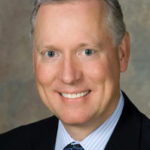June 3, 2019
By Dwight Akerman, OD, MBA, FAAO
Chief Medical Editor, Review of Myopia Management
 During discussions with optometric and ophthalmologic colleagues, I will occasionally hear, “There is not enough evidence for me to treat children who demonstrate progressive myopia.” I will then specifically ask, “What are the evidence gaps?” After several minutes of discussion, it usually becomes clear that they are not up to date with the peer-reviewed myopia literature. While I acknowledge that we have much to learn about myopia management in children and teenagers, we already know so much.
During discussions with optometric and ophthalmologic colleagues, I will occasionally hear, “There is not enough evidence for me to treat children who demonstrate progressive myopia.” I will then specifically ask, “What are the evidence gaps?” After several minutes of discussion, it usually becomes clear that they are not up to date with the peer-reviewed myopia literature. While I acknowledge that we have much to learn about myopia management in children and teenagers, we already know so much.
Not only has the International Myopia Institute (IMI) recently published eight white papers (available to download on RMM) summarizing evidence from hundreds of reports and peer-reviewed studies to provide eye care professionals, researchers, industry, and policy-makers with the most up-to-date guidance on myopia, but each month virtually every respected peer-reviewed journal publishes new clinical data on some aspect of myopia management. Quite frankly, myopia management is the hottest topic in the ophthalmic scientific literature.
Review of Myopia Management (RMM) seeks to distill the myopia peer-review literature so busy clinicians can read about the latest evidence-based treatment strategies in a concise format. Of course, all our articles are fully referenced so I encourage you to read further if you would like additional information.
RMM is exploring the various myopia treatment strategies by gathering answers to the question of “What are the current evidence-based myopia treatment options?” This month we offer a review of the latest research on the effectiveness of overnight orthokeratology for myopia management, written by Jennifer S. Harthan, OD, FAAO, FSLS. She leads the Cornea Center for Clinical Excellence at the Illinois College of Optometry, and her article outlines current treatment options, and what future research is needed. Huy Tran, MD, a pediatric ophthalmologist and a PhD candidate at the Brien Holden Vision Institute, describes the link between myopia and environmental risk factors, and how that knowledge can help ECPs reduce the risk of onset and progression of myopia.
Two more articles address the question of how to incorporate myopia management into a primary care practice. Gary Gerber, OD, writes about how ECPs can overcome “the day-to-day minutiae of running their practices” and bring effective myopia care to their pediatric patients. Jeffrey Krohn, OD, FAAO, of Fig Garden Optometry in Fresno, California, describes how his practice handles the demands of providing state-of-the-art ortho-k care for pediatric patients, everything from scheduling to proper billing.
In the coming months we’ll continue to explore the options for myopia management. As always, I welcome your suggestions and comments.
Best professional regards,

Dwight H. Akerman, OD, MBA, FAAO
Chief Medical Editor
dwight.akerman@gmail.com

Dwight Akerman, OD, MBA, FAAO, is chief medical editor for Review of Myopia Management













